Designing for Wellbeing in Healthcare Fitouts
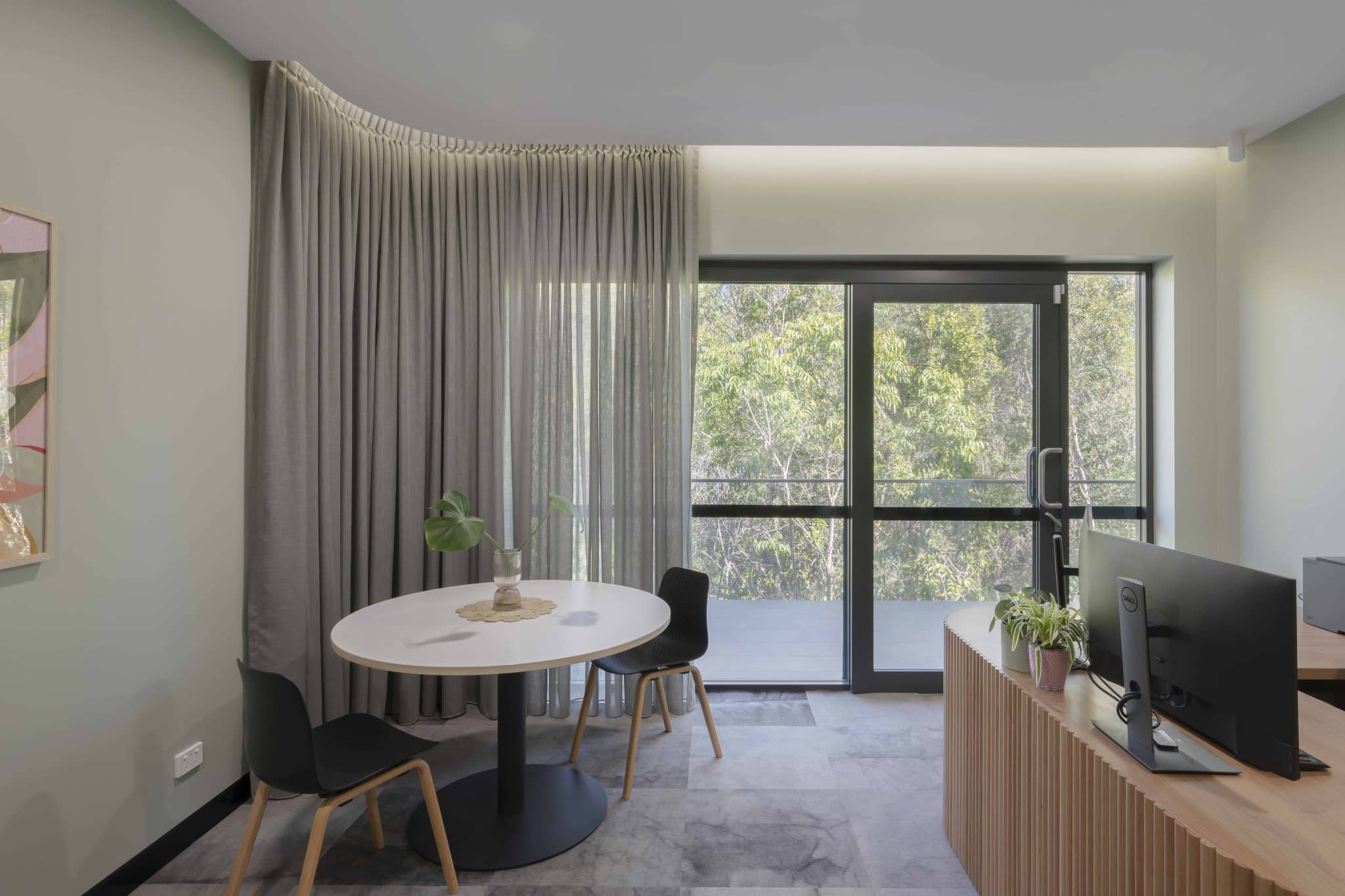
Healthcare environments are unique in their design demands. They must meet the requirements of stringent safety and clinical standards as well as enable the efficient delivery of patient care and staff workflows. As healthcare practices can have a profound psychological impact on patient and staff experience, architects and designers must also thoughtfully design these environments to influence mood and reduce stress levels.
The Impact of Nature, Light and Colour on Wellbeing
Nature, light, and colour are three elements that architects and designers strategically focus on when planning and delivering healthcare practices that promote and impact patient and staff well-being.
Nature
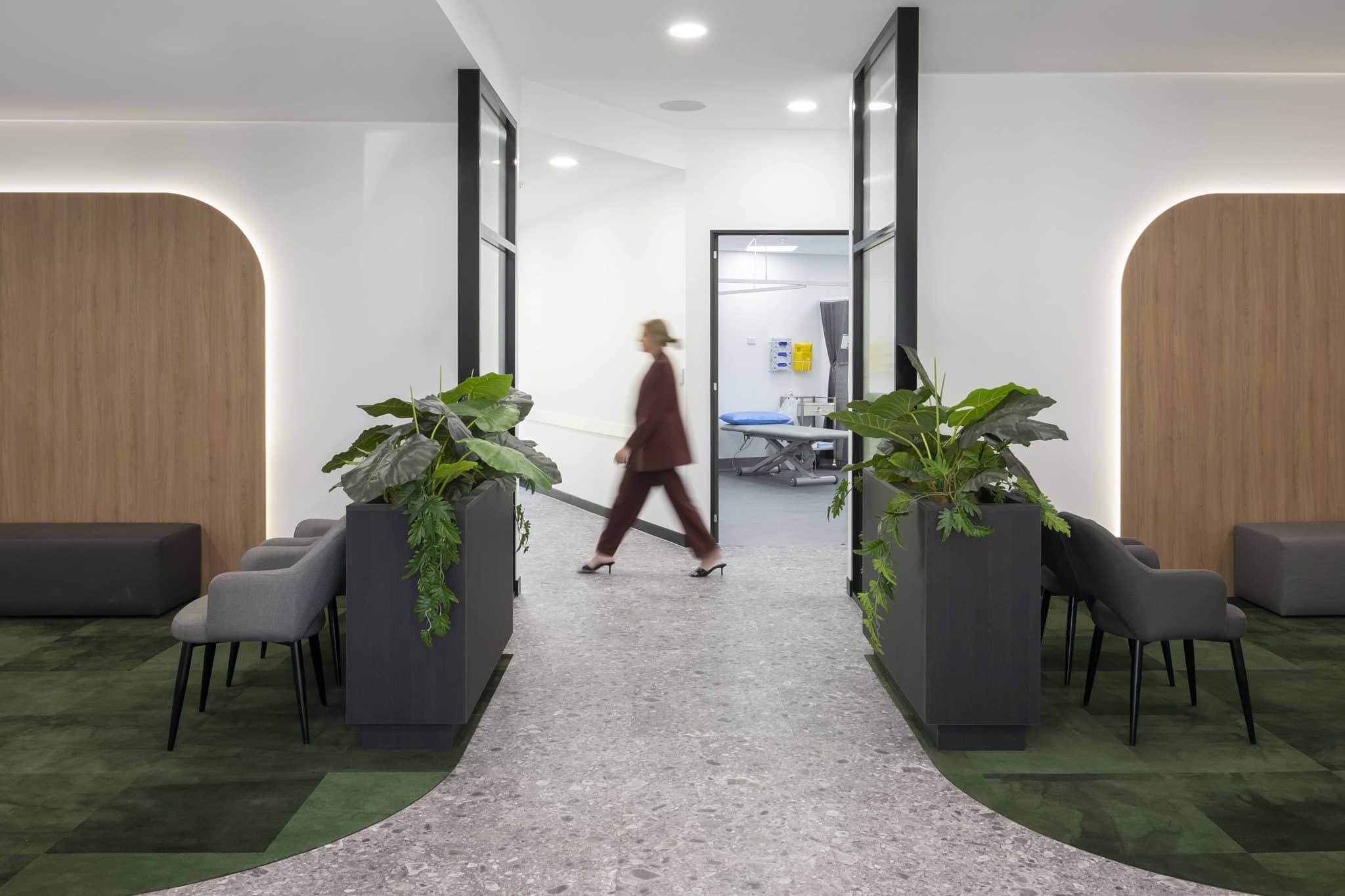
The human experience is that taking time to be in nature is revitalising and calming. Research indicates that in a healthcare setting, providing patients with views of nature, such as gardens or landscapes, can accelerate healing, lower blood pressure, and reduce the need for pain medication.
Knowing the importance of this connection to nature, healthcare designers use Biophilic design, being the practice of connecting people and the natural world, when space planning and making material and finishes selections.
At the planning stage, this is achieved by maximising the available natural light and views through windows to connect the interior environment with the outdoors. By fostering a connection with nature, the interior design of a clinic can help alleviate anxiety in patients and create a peaceful atmosphere. It also creates a sense of ease in often challenging work environments thereby enabling staff to provide better care to patients.
When creating the finishes palette, designers consider selections that reflect textures, tones and materials found in nature, such as timber and stone.
The inclusion of plants, water features and nature inspired artwork into a space are all ways to incorporate biophilic design principles.
Light
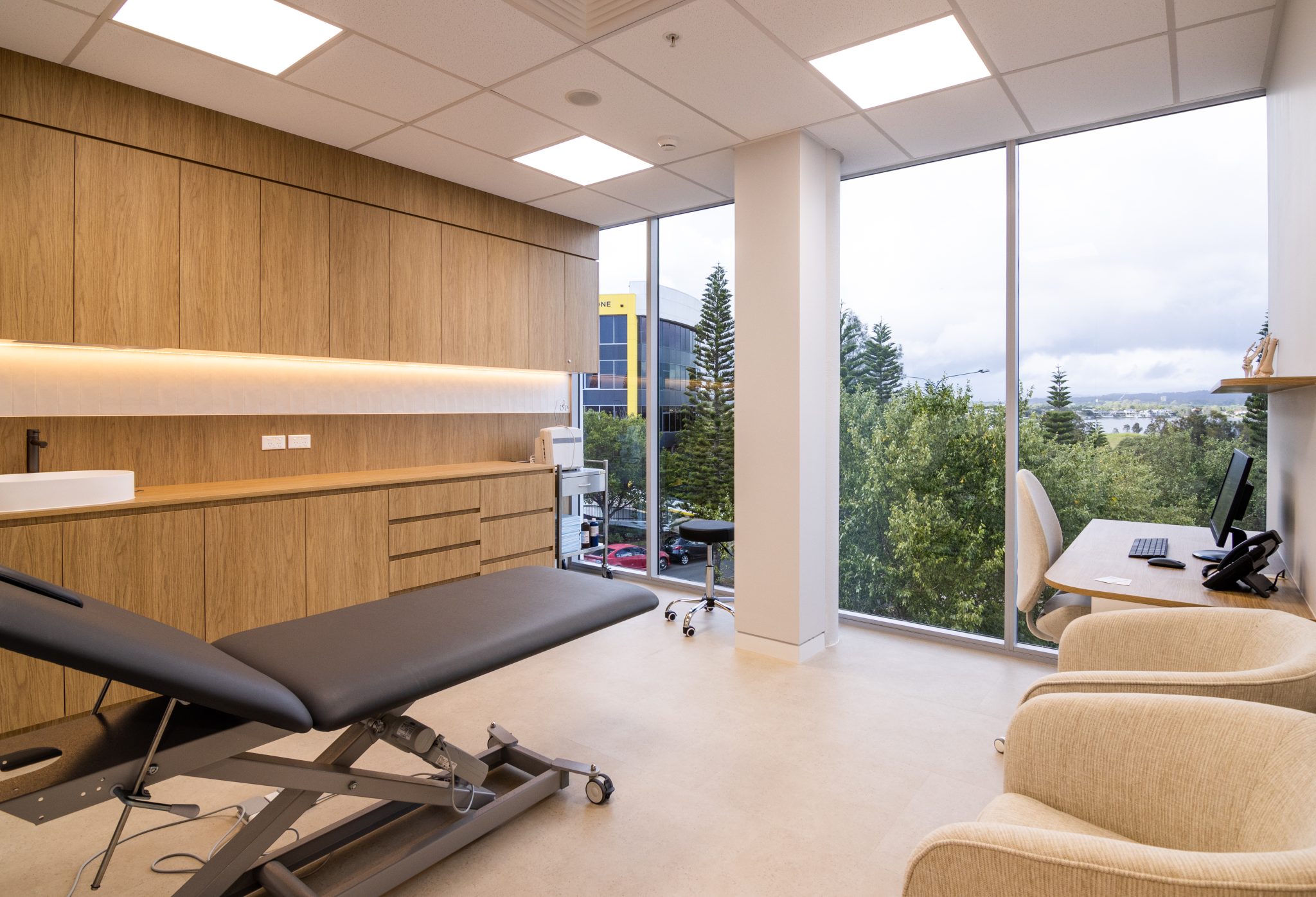
Embracing light in healthcare settings can have profound effects on patient and staff well-being. Access to daylight creates a more pleasant environment and can improve health outcomes.
The impact of lighting in a fitout can determine the room’s ambience and influences the tone of whether the space feels welcoming, intimidating, peaceful or chaotic.
Traditionally medical fit outs have predominately used cool high intensity lighting. While this is still integral to clinical areas, designers are increasingly choosing to soften lighting levels outside of those parts of the practice to a create a more restful environment for patients and staff.
Fitout designers meet specific artificial lighting levels for regulatory compliance but will often layer lighting selections of accent and ambient fixtures to add interest and enhance mood.
Colour
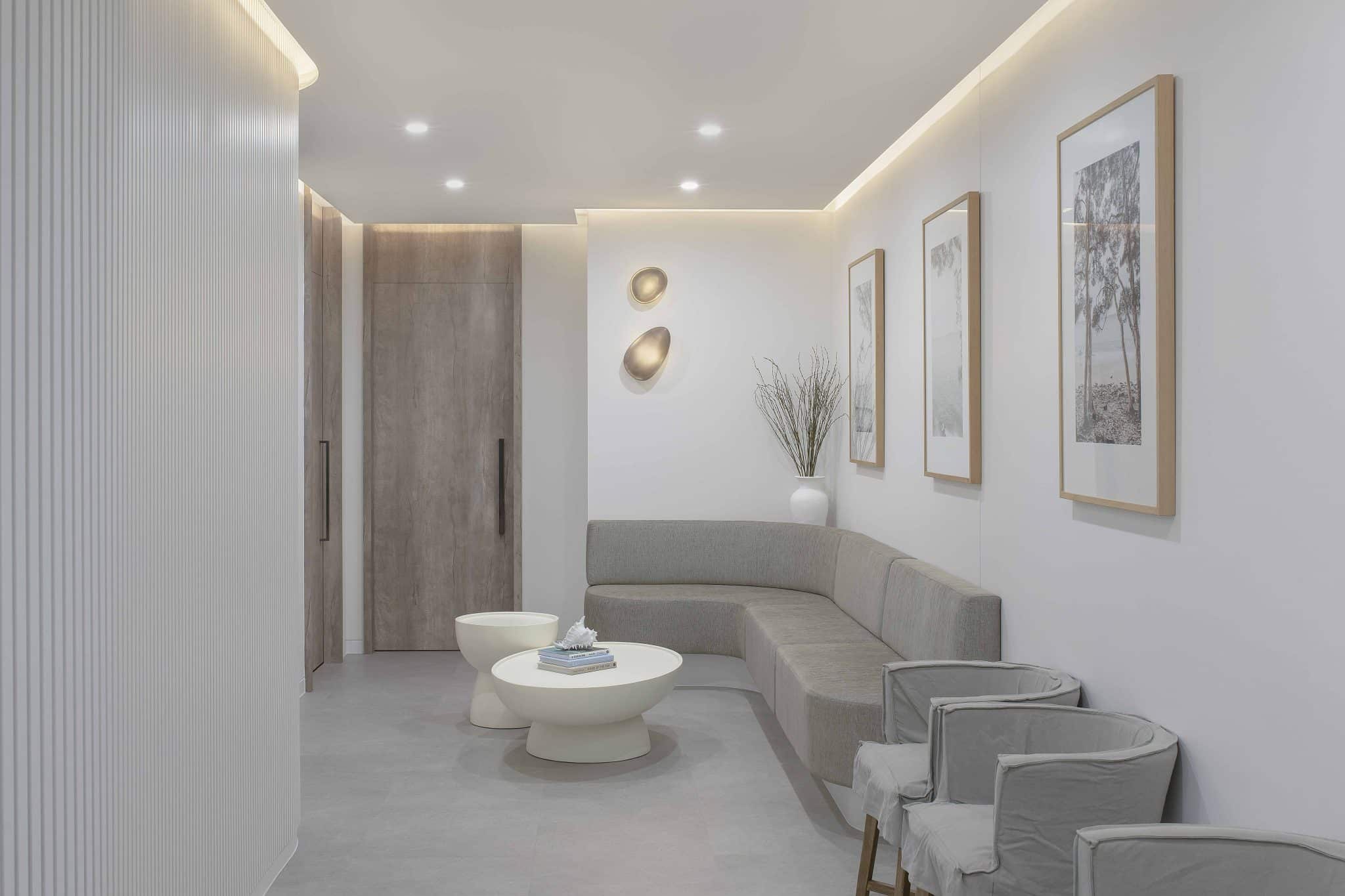
Colours can impact emotions and associations in individuals and can be used to influence a patient experience, or feeling of wellbeing, in a healthcare setting.
Colour psychology and colour theory are two principles often integrated to create environments where harmonious colour schemes not only give a sense of balance and cohesion, but emotionally support the comfort and well-being of those using the space.
Light colours in health care settings can make a room feel larger, more open, and cleaner. While darker shades make a space feel more intimate.
Calming colours, such as blues and greens can be applied in patient consultation and treatment rooms to reduce anxiety and promote a sense of tranquillity.
Earthy natural tones can also create a sense of connection to the outdoors, promoting physical and mental well-being. Vibrant colours can be used in contexts where the mood should be uplifted.
Colours are also used in signage and wayfinding which can ease stress in patients and family as they navigate a healthcare facility.
Examples of healthcare spaces designed for Wellbeing
HMS Medical on Robina

This medical space incorporates many biophilic design principles. Large windows and skylights flood HMS Medical on Robina with natural light, while potted plants and living walls are integrated throughout to bring nature indoors. Organic shapes and curved lines are also featured throughout the clinic. Additionally, wood finishes and stone accents create an ambient atmosphere and connection to the outside world to promote the recovery process.
Coastal Orthopaedics
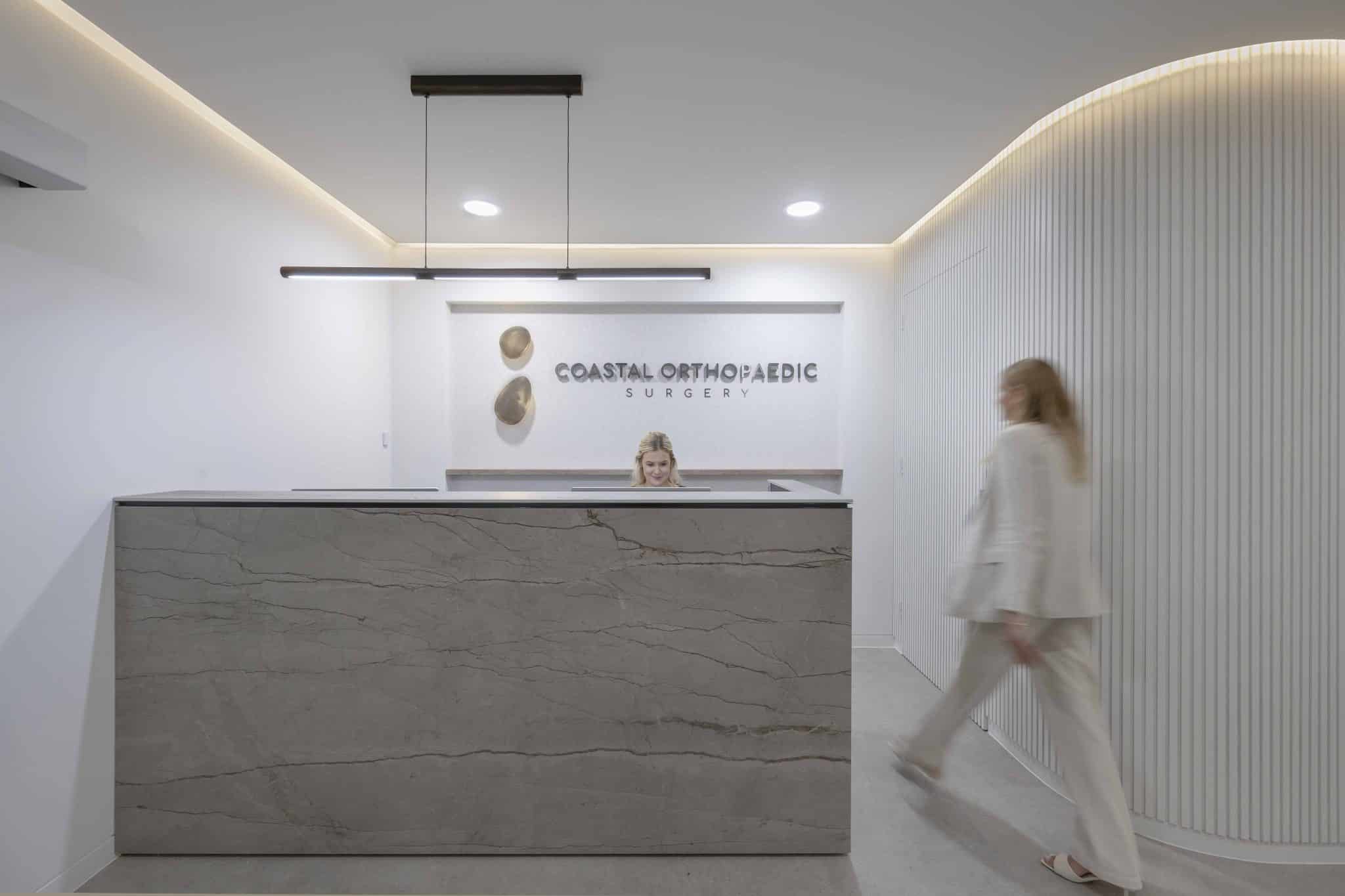
Dr. Frank Connon, a specialist at Sunshine Coast University Private Hospital elevated the patient experience in his consulting suite. This involved celebrating the surrounding coastal environment with a luxe aesthetic featuring organic shapes and earthy elements.
The finer touches, like handcrafted weathered oak timber chairs, pebble-shaped glass wall lights, and warm grey stone finishes have turned his suite into a coastal haven for patients.
South East Queensland Sport and Exercise Medicine (SEQSEM)
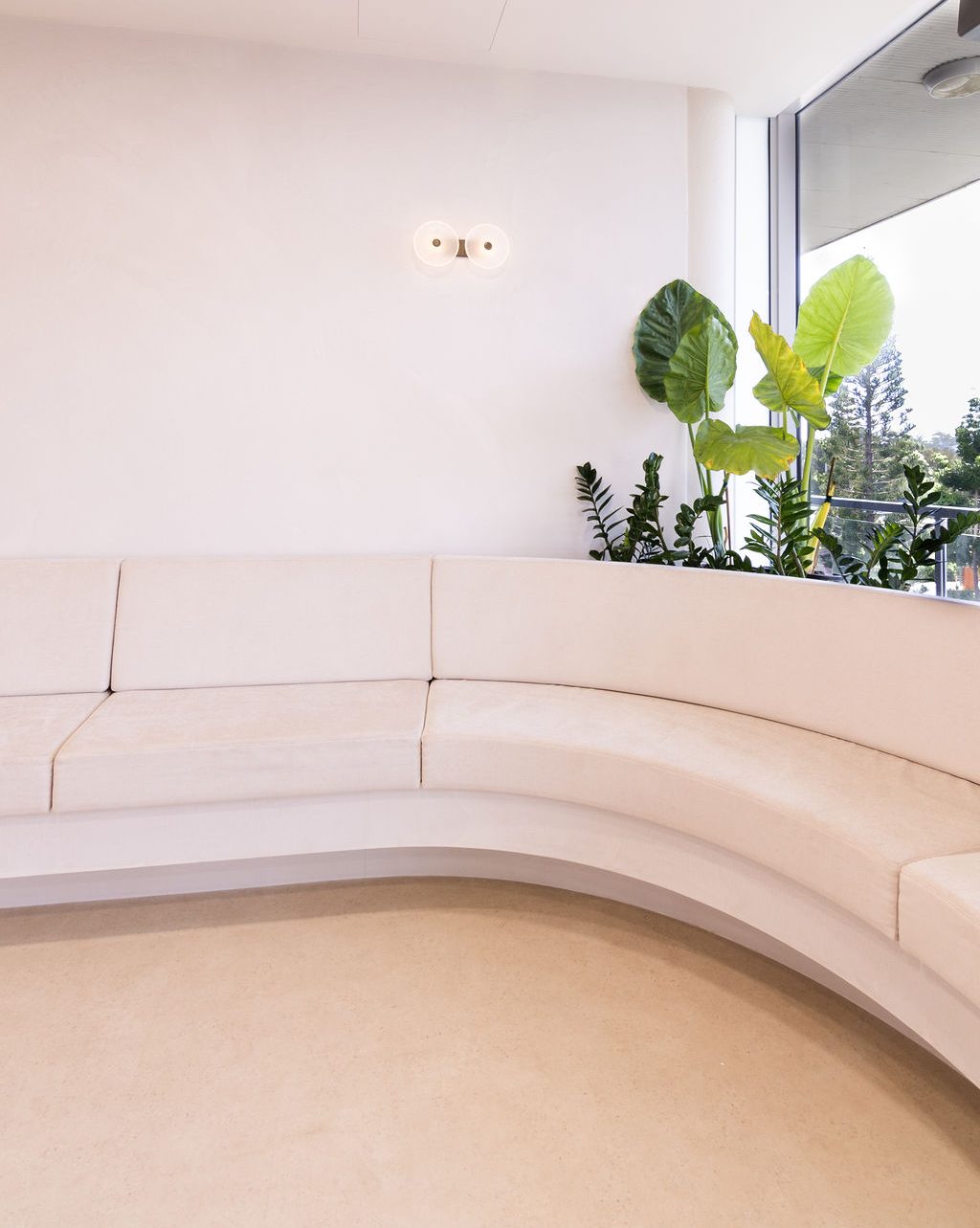
SEQSEM balances function with the care and comfort of its patients. A subdued palette of warm whites and soft beige creates an air of serenity while locally crafted wall light features give an organic feel to the space. The central hallways also feature natural curves and greenery housed in planter boxes and bulkheads, bringing nature indoors. Natural travertine tiles are featured in the reception area and every consultation room offers uninterrupted views of Varsity Lake thanks to full-height external glazing.
Bendigo Children’s Dentistry

Dr. Amanda Leske, a passionate paediatric dentist, has created a dental clinic that alleviates children’s fears and anxieties about dental visits, particularly those with special needs and neurodivergence.
To create an inviting and fun first impression, the clinic’s waiting area has an oceanic theme which is captured using tones of blues colours, curved bulkheads, nautical looking joinery, and playful signage. These encourage the children to explore upon arrival.
Each surgery is colour themed to appeal to children, featuring colourful dental equipment, in-ceiling screen displays and parent seating. And the OPG room was designed in a space theme to make the equipment less intimidating and a more engaging experience for the young patients.
By creating environments that prioritise the elements of nature, light and colour, designers of healthcare practices actively contribute to improving the overall well-being of patients, making a significant difference in their recovery journey. The impact of these elements also extends to higher job satisfaction for staff leading to better clinic efficiency and enhanced patient care.
Elite Fitout has extensive experience in the interior design and construction of healthcare spaces. Contact us on 1300 765 344 to discuss how we can help you enhance the patient and staff experience at your clinic.
- Category :
- Type :